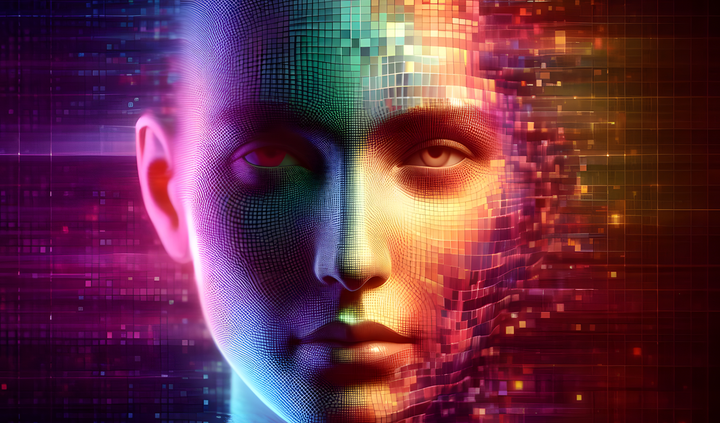Food is central to our lives – but how we produce and consume it needs a fundamental rethink. We spoke to Christina Senn-Jakobsen from Swiss Food & Nutrition Valley, to see how innovation, including agricultural (AgTech) and food technology (FoodTech), is changing the future of food for the better. Explore our full interview here.
“Triggered by the industrial revolution, we learned how to produce a mass amount of food, at an affordable price that’s safe for consumption,” says Christina Senn-Jakobsen, managing director of Swiss Food & Nutrition Valley. “But we overdid it, unaware of the damage such food systems would bring.”
With eight billion mouths to feed, the current food system is unsustainable. Nearly a third of food produced is wasted, while at least a billion people are malnourished. Whether it’s cutting meat consumption, more nutritious diets, or more sustainable farming, change is needed. Innovation is essential to protect planetary and human health.
| CRISIS FOR PEOPLE AND PLANET
Global agriculture has a devastating environmental effect. In 2019, 16.5 billion metric tonnes of carbon dioxide equivalent (CO2e) came from global agri-food systems – a third of human-produced greenhouse gas (GHG) emissions. Higher emissions mean more chances of extreme weather events (such as heatwaves, wildfires or flooding). Meanwhile, ocean acidification is happening 100 times faster than at any other time in the last 55 million years, putting a strain on marine life.
The human impact is just as severe. Research suggests half the population could be overweight or obese by 2035 and childhood obesity rates could double. Other diet-related illnesses like diabetes are also rising. Meanwhile, millions of people still can’t access nutritious or safe food. “Poor diets contribute significantly to deaths worldwide, surpassing the impact of traditional risk factors like tobacco use, alcohol consumption, and unsafe sex practices – accumulated,” says Ms Senn-Jakobsen. “We probably grow enough calories around the world to feed the population, but it’s nutritionally deprived.”
| TECHNOLOGY MAKES THE DIFFERENCE
These twin threats make sustainable eating and sustainable farming two vital megatrends that investors will want to address in portfolios. In both areas, technology is making a vital contribution.
Sustainable farming
Cutting waste is a key area of transformation – goal 12 of the UN’s Sustainable Development Goals is to halve per capita global food waste by 2030. AgTech is likely to play a key role in achieving this.
Artificial intelligence (AI) is a powerful tool, with potential to aid productivity, cut waste, optimise the supply chain and enhance safety standards. Machine-learning algorithms can analyse data to assess when to plant, forecast yields, and catch diseases earlier, while tasks like planting and harvesting can be done automatically. “Speed is critical,” says Ms Senn-Jakobsen. “AI will enable us to accelerate the technologies, better predict the future and make the right choices.”
| SUSTAINABLE EATING
Technology can also help transform diets. Cultured meat is already gaining traction among food producers. Bioreactor-grown muscle tissue, produced from animal stem cells, can be a key solution to feeding 10 billion people by 2050 sustainably. Further, it can reduce some of farming’s harmful environmental impact, such as GHG emissions, water use, pollution and land use. Although not yet commercially available, it is cleared for public consumption in the US by the FDA (the future is less clear in the European Union).
Elsewhere, there are advances in personalised nutrition and digitalisation, such as smartphone apps that provide personalised dietary advice; using AI to reformulate products, boosting their nutritional value; and wearable technology that monitors blood sugar and other nutrients in the body. Other companies are investing in digital-twin technology to provide consumers with a more detailed personal picture of their health and nutrition.
"Poor diets contribute significantly to deaths worldwide, surpassing the impact of traditional risk factors like tobacco use, alcohol consumption, and unsafe sex practices – accumulated... We probably grow enough calories around the world to feed the population, but it’s nutritionally deprived"
— Christina Senn-Jakobsen, MD of Swiss Food & Nutrition Valley
With its “farm-to-fork” remit, Swiss Food & Nutrition Valley’s network includes global food industry players like Nestlé. The collaboration with large enterprises is essential.
“Fundamentally, we cannot transform the food system without the help of large corporates and the overall industry,” says Ms Senn-Jakobsen: “Their knowledge, access to production technologies, ability to reach every corner of the world through their logistics systems, the talent they have as well as sheer amount of food they’re supplying today – all this is essential for the transformation to move fast enough and be good enough.”

| WHOSE RESPONSIBILITY IS THE FUTURE OF FOOD?
“Food transformation is not one big bet,” says Ms Senn-Jakobsen. “It’s many strains we need to develop and, importantly, develop for scale.”
Ultimately, the transformation is everyone’s responsibility – producers, government, retailers, and us the consumer. Ms Senn-Jakobsen says investors should think about where they can make an impact and the “legacy” they want to leave, but even sitting down with your family to work out your own sustainability plan will benefit the greater good. It’s “all hands on deck”.

Julius Baer
International wealth management group, based on a solid Swiss heritage. Special thanks to Carsten Menke & Nikolaus Werner.
juliusbaer.com




